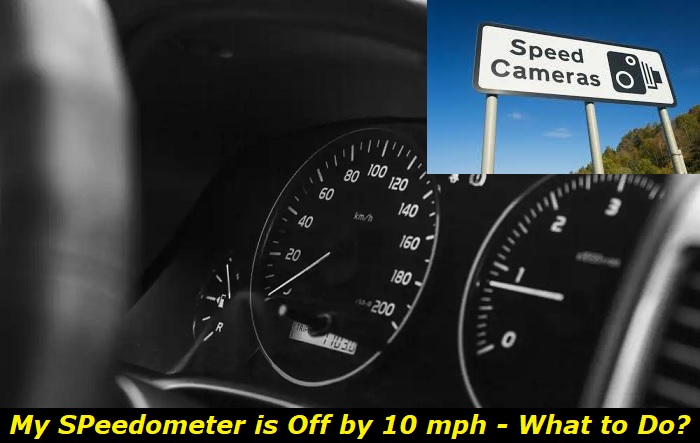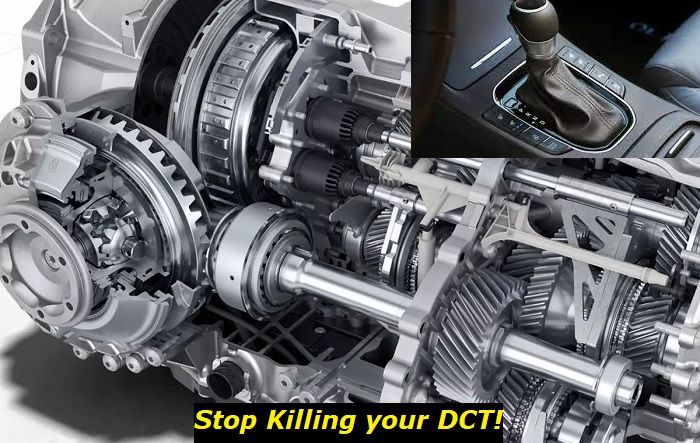A speedometer shows your vehicle's speed. It uses speed sensors to measure RPM (revolutions per minute) and subsequently translate these numbers into miles per hour. A fault in the speedometer may cause issues with your car's speed. One moment you go through the speed trap, and the next second you get a speeding ticket while driving at the same speed.
Could it be a faulty speedometer? Perhaps you're driving with broken gears or a faulty ECU (engine control unit). Well, let's find out. Today's article will cover why your speedometer is off and how to fix it.

What's a Speedometer?
A speedometer is a circular gauge on your dashboard. It measures how fast a vehicle moves. It does this by measuring how swiftly the wheels are revolving. The reading in the speedometer will keep changing as you drive your car. Your vehicle can have a digital or a mechanical speedometer.
A mechanical speedometer uses magnetic eddy currents and a drive cable to measure and display a vehicle's speed. It's attached to the transmission shaft. Therefore, the car can accurately measure its speed when its electronic sensor fails. The mandrel will rotate once the transmission shaft starts revolving. Hence, causing the magnet to rotate. The revolution, in turn, causes a magnetic field that creates a force that lets the speedometer needle pinpoint the vehicle's speed.
In the case of an electronic speedometer, the vehicle will display its speed with the help of speed sensors (rotation sensors). The sensors connect to a toothed disc. So, the drive shaft rotates as you foot-press the gas pedal, causing the ridges on the metallic disc to disrupt the magnetic coil's electromagnetic field. The disruption, in turn, sets off the detector, consequently transmitting a pulse to the sensors. They should be in tune with the rotational speed of your driveshaft. The vehicle's computer will translate the pulses into kilometers or miles per hour.
The number on your speedometer gauge is vital since all cars are legally required to have working speedometers. But most modern speedometers are set to overestimate the actual speed. The overestimation reduces the likelihood of drivers exceeding the speed limit. It's a standard requirement for all vehicles, but the odometer will always show your car's exact distance. The overstatement is often off by a minimal percentage point. However, the allowable margin error should never exceed 10%. That's about 4 to 6.5 miles per hour. A speedometer should never display a lower figure than the actual speed.
Therefore, you should be concerned when you have an off-speedometer. The 10 miles per hour exceeds the standard margin of error. It could be an indication of a faulty speedometer. It's not only dangerous but also illegal. It will also put more mileage on your car.
Therefore, you'll have to schedule a visit with your mechanic if you notice that the speedometer is not working as it should.
What Causes an Off Speedometer
There are lots of components that make up the speedometer. Any damage to these components may cause your speedometer to stop displaying an accurate speed. Any off-figure may trick you into speeding your car. Let's look at the different reasons why the speedometer is off.
1) A Damaged Speed Sensor
The speed sensors determine how fast you're driving your vehicle. Therefore, the figure on your speedometer reflects what the speed sensor gets from the transmission shaft. An abnormal output on your speedometer is one of the indications of a damaged speed sensor. It's often common among electronic speedometers.
A faulty sensor may also affect the engine since it relies on the speed sensor input to make necessary adjustments as you speed or slow your car. Therefore, a damaged sensor also impacts how you drive your automobile. You may also observe delayed shifts or limited gear functioning. A damaged sensor may also limit your ability to activate the cruise control.
So, what causes the damage?
A simple issue like an electrical fault can damage the speed sensor. Also, a crack or poor maintenance can damage the speed sensor. It's possible to drive with a faulty speedometer, but you can get into legal trouble. You'll also put other road users at risk if you move around with a malfunctioning speedometer.
How To Fix a Damaged Speed Sensor
A replacement will be the best fix. But you'll need to assess and test your speed sensor before fixing it.
Start with a visual assessment of the sensor. Evaluate whether you can see any visible damage to the sensor. If you don't see any damage, assess all the electrical components using a multimeter. A continuity test will help determine whether there is an issue with the wiring connection. Start by parking your car on a level-plain surface. Turn off every component connected to the battery and locate the speed sensor. Once you find it, unplug the wires on the sensor. You also need to remove the sensor. Start by loosening the screws before yanking the sensor. Forcing the sensor may damage it. You can also pull the two wires on your sensor using your fingers.
Once they're out, do a continuity test to see if they're connected properly. Connect the sensor wires to the multimeter. Set the multimeter to ohms and choose the highest range possible. Connect each probe to the speed sensor connector. Also, connected the probes to the exposed wires emerging from the sensor. Check whether the multimeter records any readings. You should see a change in your multimeter's reading. No change means the connector is faulty.
You can also measure the sensor's voltage. The sensor may be damaged if the multimeter doesn't record any voltage input. Also, do a spin on the speed sensor test with your multimeter. You should see a slightly higher reading as you spin the sensor.
You can also utilize an OBD-II scanner to pinpoint the damage to your speed sensor. Replace it if you observe any damage on the sensor. Besides, wiring faults on a speedometer are hard to fix. Therefore, you may need a new one.
2) Miscommunication with the ECU
The ECU communicates with the speedometer to let you know how fast or slow you're driving your car. Therefore, a miscommunication may cause your speedometer to record a higher or lower figure than your actual speed.
Fixing the ECU Miscommunication
You'll need to reset your ECU. You can readjust it via the fuse box. Warm up your engine by driving your car for 10 to 15 minutes to get it to an ideal working temperature. Pop the bonnet and unhook the negative lead on the battery. Ensure the cable doesn't contact metal surfaces. Let the car settle for five minutes. Press and hold your breaks for close to 20 seconds. Afterward, reconnect the negative cable. Alternatively, you can pull out the footlight or radio fuses to reset the ECU.
Drive the car after resetting it and check whether the speedometer is working as expected. The resetting is a temporary fix. You may need your ECU if it's broken.
3) Tire Size Change
Manufacturers set a vehicle's speed to be in tune with the size of its factory-installed tires.
Therefore, you may experience an inaccurate speedometer after changing your tires. A big tire will cause few but slow rotations compared to small-sized tires because large tires take more time to turn. Therefore, the speedometer may record a lower figure than your actual speed. If you switch to a smaller tire size, the rotations will be more and quicker. Therefore, the speedometer may record a higher figure than your actual speed.
The odometer may also record a longer distance if you swap to smaller tires or shorter if you use large tires.
Your speedometer may give you an inaccurate reading if the threads on your tires are worn-out. There will be less air and rubber on the tire. Therefore, decreasing the tire's diameter.
Minimizing the Impact of Tire Change
The best way to minimize how the tire change may affect your speedometer is to reduce the size difference. Consider the diameter size when you plan to swap your tires. The difference between the original and the new shouldn't exceed 5%. The diameter should also remain close to the original size. If you decide to go with a lower wheel profile, you may have to compensate for the difference by getting a slightly large wheel.
Use calculators that are available online before settling on tire size. Also, stick to your manual's recommendation when doing a tire size. A different brand type may result in a significant difference causing an inaccurate speedometer.
Summary
The speedometer records the car's speed by assessing how quickly or slowly the wheels spin. The spins will translate into miles per hour or kilometers per hour. The figure should always be accurate to avoid landing into any legal troubles.
Therefore, schedule a meeting with your mechanic if you observe an inaccurate speed on your speedometer gauge. Issues such as tire changes, worn-out tires, a faulty speed sensor, or a malfunctioning ECU may cause an error on the speedometer. Therefore, your mechanic will help you pinpoint what could be causing the erratic reading on the speedometer.
About the authors
The CarAraC research team is composed of seasoned auto mechanics and automotive industry professionals, including individuals with advanced degrees and certifications in their field. Our team members boast prestigious credentials, reflecting their extensive knowledge and skills. These qualifications include: IMI: Institute of the Motor Industry, ASE-Certified Master Automobile Technicians; Coventry University, Graduate of MA in Automotive Journalism; Politecnico di Torino, Italy, MS Automotive Engineering; Ss. Cyril and Methodius University in Skopje, Mechanical University in Skopje; TOC Automotive College; DHA Suffa University, Department of Mechanical Engineering






Add comment